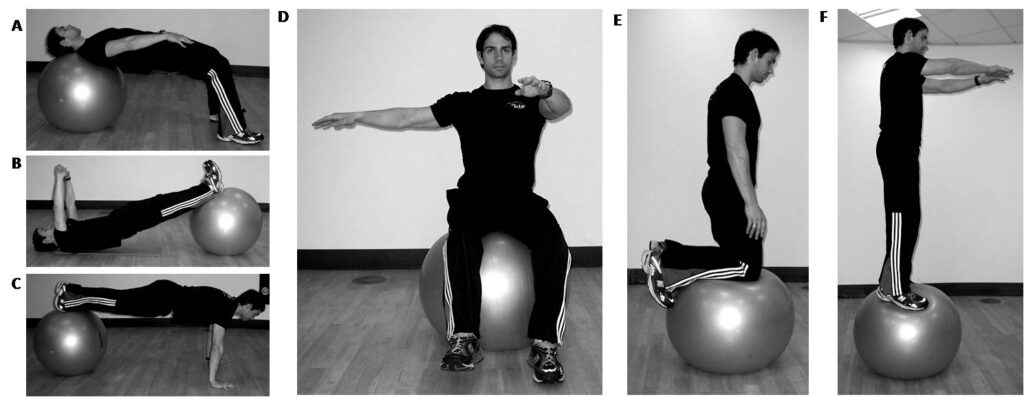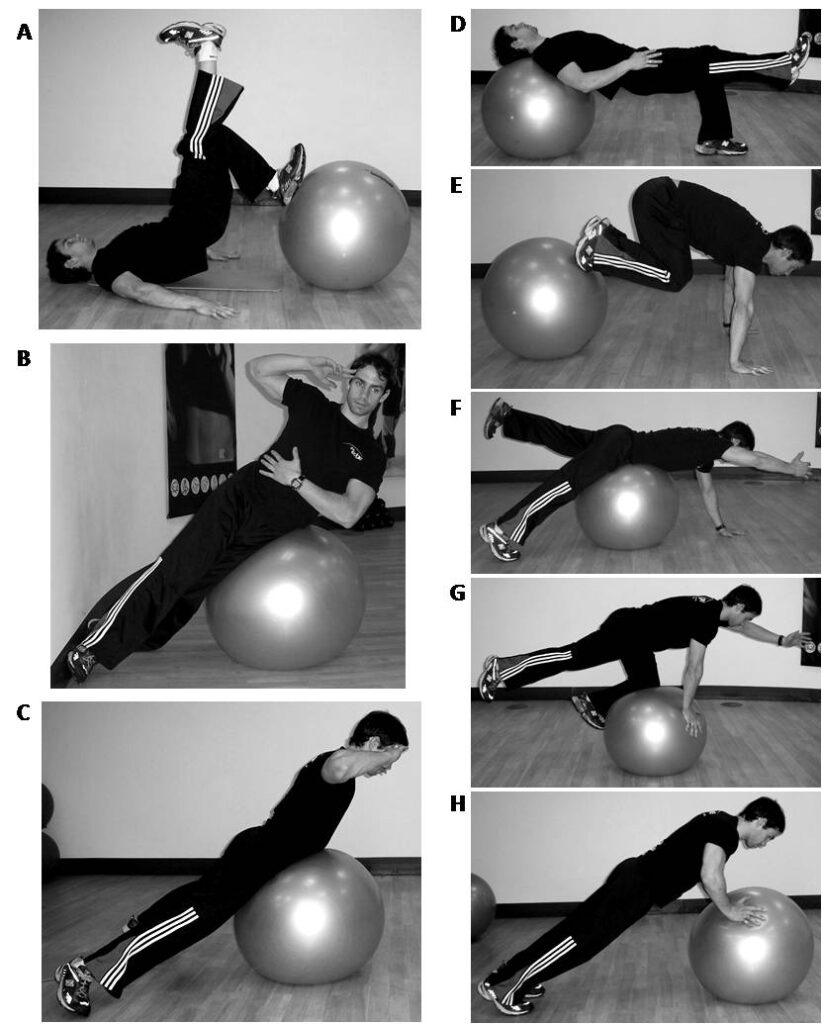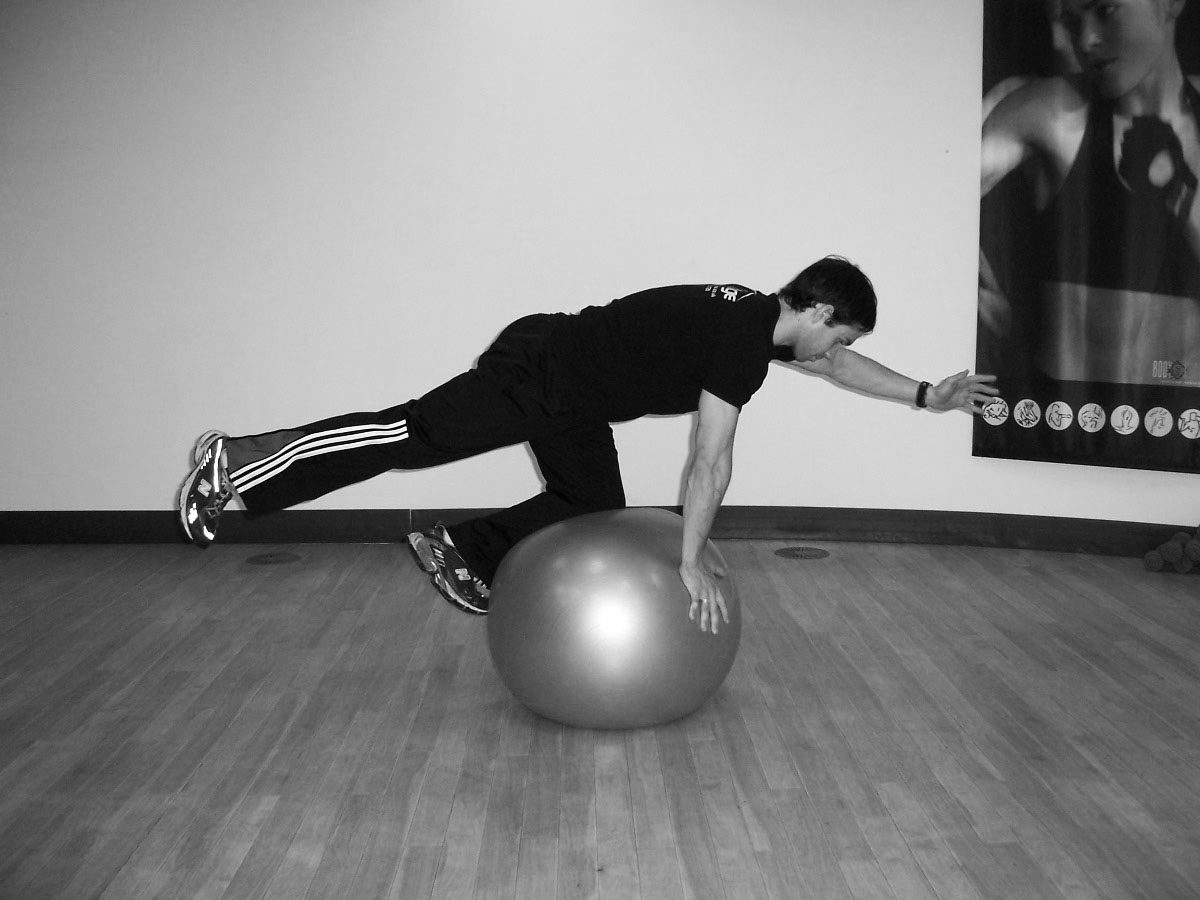The purpose of this article is to inform fighters and coaches in mixed martial arts about the nature of instability training, and to provide guidance for those who wish to engage in it.
The term ‘instability training’ was chosen over other commonly used terms, like ‘core stability training’, because it emphasizes the training goal, which is to create instability in each exercise, not stability. In this article, the term ‘core’ refers to the musculature that supports the trunk (i.e. rib cage and spine), upper extremity (shoulder girdle) and lower extremity (pelvic girdle). All of these muscles work together as an integrated whole to maintain balance, rather than in isolation (4) and core stability (or balance) is controlled through complex neuronal communication between peripheral sensors within the core musculature and central brain structures (6).
To date, there is no clear scientific evidence to support the claim that instability training improves athletic performance (2, 4, 6). It is clear however, that instability training should not be undertaken when muscular hypertrophy, maximal strength, or power is the main goal of a training session, because force generation, power output and movement velocity are all impaired with instability, and this has the effect of lessening the training stimulus, which in turn lowers the training response (2). Interestingly, many traditional resistance exercises such as Olympic lifts, dead-lifts and squats are also highly dynamic in nature, but have been shown to optimize strength and power (1) and probably stimulate core musculature comparably to using stability/bosu balls or wobble boards (2). Lastly, some proposed that sport specific training alone provides an adequate stimulus for improving balance and core stability (2), perhaps Willardson (7) put it best:
‘the optimal method to promote increases in balance, proprioception and spinal stability for a given sport is to practice the skill itself, on the same surface on which the skill is performed in competition’.
In the sport of mixed martial arts however, muscles rarely function in isolation of one another, indeed the trunk musculature is critical in transferring force during throwing (i.e. punching) and kicking activities (2). For this reason, it has long been acknowledged that training on a stable surface with free-weights i.e. on a bench is preferable to training with machine controlled weight because the movements during free-weight exercises are more specific to the dynamic actions required in most sports (1), like MMA. The same argument could be made for performing free-weight exercises on an unstable surface, like a stability ball. In fact, performing resistance exercises on a stability ball has shown to increase the activation of the core musculature compared to the same exercise performed under more stable conditions (2). Specifically, increasing the instability of a given exercise may stress the neuromuscular system to a greater extent than traditional weight training methods. In this view, instability training could make the spine more robust whereby the trunk system is better able to cope with uncertainties and disturbances during dynamic movements (5, 6), which often arise in the sport of mixed martial arts. On another note, the specificity principle holds that training programs in mixed martial arts should be structured in a way that exposes fighters to stimuli they will encounter during competition, which includes a wide variety of postures and external forces; this can be achieved by engaging the fighter in a wide variety of exercises that feature movements in all planes of motion (2), and this is where instability training may play a role in a fighters training program.
Given this, it is not unreasonable to incorporate instability training into certain phases of a periodized MMA training; however, dynamic whole-body free-weight movements should form the foundation of exercises to train the core musculature (2). In this view, a fighter could incorporate instability training in the early stages of fight preparation, when sport specific training is minimal and the main goal of training is to experience a wide variety of exercise modalities, or during a muscular endurance phase when training intensity is less than 70 % of 1 repetition maximum. Instability training could also be incorporated as an active recovery workout anytime in the periodized training schedule, or during an unloading phase where the goal is to train light so as to encourage greater supercompensation.
Although instability training can begin with simple static movements, a fighter should progress to dynamic movements as soon as possible because the sport of mixed martial arts is dynamic in nature, not static. Below you will find a general progression from static to dynamic stability exercises, mostly utilising the stability ball as a tool to increase instability, but you should not that there are many other ways to achieve this (i.e. bosu balls, wobble boards, fitness rings, etc.).
As a general note, abdominal bracing, or generating intra-abdominal pressure through co-contraction of all major abdominal muscles, appears to stabilise the spine more effectively than abdominal hollowing (3), and should be emphasised when performing the exercises shown below.
Try these basic static positions first.
 Fig. 1. Static positions on a stability ball. A. Pelvic bridge. B. Foot bridge. C. Push-up position. D. Seated position. E. Kneeling position. F. Standing position.
Fig. 1. Static positions on a stability ball. A. Pelvic bridge. B. Foot bridge. C. Push-up position. D. Seated position. E. Kneeling position. F. Standing position.Once you can maintain your balance in static positions 1A to 1D, you should challenge your balance by increasing the instability of each position. This can be achieved in at least two ways; First, by modify your base of support, either by lessening the points of contact with the ground (notice one foot is raised in figure 1D) or by narrowing your base of support (i.e. bring your feet or hands closer together). The second way to increase instability is to induce asymmetry, which can be achieved by moving one limb, like an arm as shown in Fig 1D, away from your centre of mass. If you are holding dumbbells, be sure to put one down because the arm holding the inactive dumbbell will provide a counterbalance and negate the destabilising effect of the extended arm holding the dumbbell.
Also note that when you master the pelvic bridge (Fig 1A) and the sitting position (Fig. 1D), you can incorporate any number of free-weight exercises in your training program that would normally be done on a stable bench. For example, you can perform dumbbell shoulder press, bicep curl and many other movements from a seated position on the stability ball; from a pelvic bridge position you can perform any number of dumbbell based chest exercises, and if you adjust the angle of your body slightly, incline pressing movements.
Various free-weight exercises can also be performed from the kneeling (Fig 1E) and standing (Fig 1.F) positions, but these exercises require greater postural control and are much more dangerous; this is your warning and my disclaimer, do not attempt them without proper safety precautions.
With a mastery over the basic static positions in Fig 1, you can make the exercise more dynamic by moving your limbs together or in isolation. Some examples are shown in Fig 2.
 Fig 2. A. Knee extension from foot bridge. B. side crunch. C. Back extension (do not extend beyond that pictured). D. Knee extension from pelvic bridge. E. Hip flexion from push-up position. F. Alternating shoulder and hip extension with opposite limbs lying on ball. G. Alternating shoulder and hip extension with opposite limbs kneeling on ball. H. Push-up on ball
Fig 2. A. Knee extension from foot bridge. B. side crunch. C. Back extension (do not extend beyond that pictured). D. Knee extension from pelvic bridge. E. Hip flexion from push-up position. F. Alternating shoulder and hip extension with opposite limbs lying on ball. G. Alternating shoulder and hip extension with opposite limbs kneeling on ball. H. Push-up on ballOnce the fighter is able to maintain their stability under dynamic conditions, sport specific exercises can be incorporated. In this case, balance and stabilization exercises should try to incorporate movements in all planes of movement. Such sport specific activities often incorporate throwing/catching/punching, dumbbell, theraband and body movements (squats, lunges, push-ups) into stability ball training regimes, but you are only limited by your creativity. Remember, the goal is to increase instability such that your balance is challenged, and not to lift as much weight as you can, nor is it to fall in spectacular fashion and injury yourself.
References
- Baechle & Earle (2nd ed.). (2000). Essentials of Strength and Conditioning. Champaign IL, USA: Human Kinetics.
- Behm et al., (2010). Applied Phys Nut Met. 35, 91-108.
- Grenier & McGill (2007). Arch Phys Med Rehabil. 88(1), 54-62.
- Lederman (2010). J Bodywork Movement Ther 14, 84-98.
- Reeves, Narendra & Cholewicki (2007). Clin Biomec 22(3), 266-274.
- Reeves, Narendra, Cholewicki (2011). Clinical Biomechanics. 26, 325-330.
- Willardson (2004). Strength Cond J. 26:70-74.

Leave a Reply